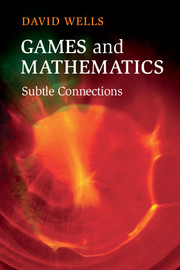Book contents
- Frontmatter
- Contents
- Acknowledgements
- Part I Mathematical Recreations and Abstract Games
- Part II Mathematics: game-like, scientific and perceptual
- 6 Game-like mathematics
- 7 Euclid and the rules of his geometrical game
- 8 New concepts and new objects
- 9 Convergent and divergent series
- 10 Mathematics becomes game-like
- 11 Mathematics as science
- 12 Numbers and sequences
- 13 Computers and mathematics
- 14 Mathematics and the sciences
- 15 Minimum paths: elegant simplicity
- 16 The foundations: perception, imagination, insight
- 17 Structure
- 18 Hidden structure, common structure
- 19 Mathematics and beauty
- 20 Origins: formality in the everyday world
- References
- Index
20 - Origins: formality in the everyday world
Published online by Cambridge University Press: 05 November 2012
- Frontmatter
- Contents
- Acknowledgements
- Part I Mathematical Recreations and Abstract Games
- Part II Mathematics: game-like, scientific and perceptual
- 6 Game-like mathematics
- 7 Euclid and the rules of his geometrical game
- 8 New concepts and new objects
- 9 Convergent and divergent series
- 10 Mathematics becomes game-like
- 11 Mathematics as science
- 12 Numbers and sequences
- 13 Computers and mathematics
- 14 Mathematics and the sciences
- 15 Minimum paths: elegant simplicity
- 16 The foundations: perception, imagination, insight
- 17 Structure
- 18 Hidden structure, common structure
- 19 Mathematics and beauty
- 20 Origins: formality in the everyday world
- References
- Index
Summary
The veins of a leaf, a meandering river, a butterfly wing, knots in vines and creepers, ripples in water, crystals in rocks, the stripes on a tiger – patterns in nature are too striking to be missed. Indeed, the simplest must be recognised because the human brain has been designed by evolution to automatically pick out, for example, patterns of bars and stripes. The earliest cave art includes rudimentary patterns and many tribal people today decorate their own bodies with complex designs which illustrate their aesthetic sense.
The invention of weaving not only made it easier for early humans to live in colder and inhospitable climates, it enabled the development of more complex designs. The sophisticated Celtic ‘knots’ combine horizontal and vertical repetitions from weaving with the over-and-under pattern of knots which sailors long since turned into a decorative art form as well as an essential practical technique.
Aristotle wrote that beauty was composed of order, proportion and exactness [Metaphysics XIII, M, iii] so it is no surprise those features are found in traditional architecture or that Leonardo da Vinci wrote, ‘Let no one who is not a mathematician read my works.’ The arts in the Christian West have always been linked to mathematics and proportion.
- Type
- Chapter
- Information
- Games and MathematicsSubtle Connections, pp. 217 - 233Publisher: Cambridge University PressPrint publication year: 2012



